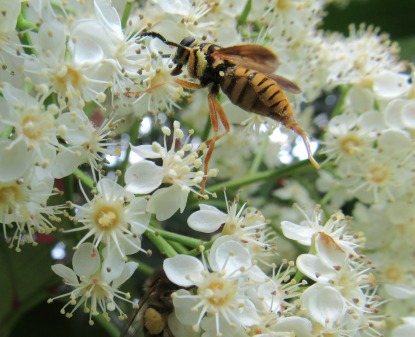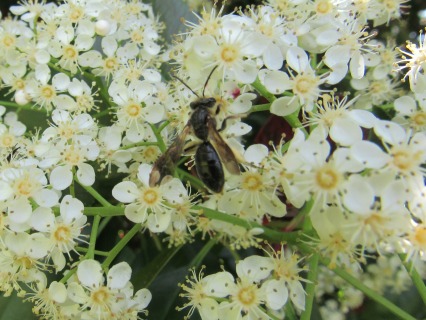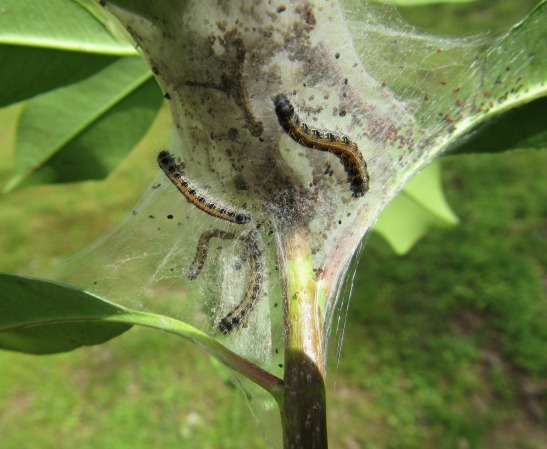I stood among hundreds of flying, stinging insects by the red tip hedge trying to catch close up pictures as the wind blew madly. Against all odds I managed to capture a few of the different insects without getting stung.
The Mighty – Yellow Jacket, the meanest of the stinging insects.

The Honey Bee, from my husband’s hive.

One of the smaller Wasps we have here in Arkansas.

Then I found caterpillars on the red tip hedge. They hatch out every Spring and devour trees and shrubs. Time to haul out the bug spray for these critters.
















